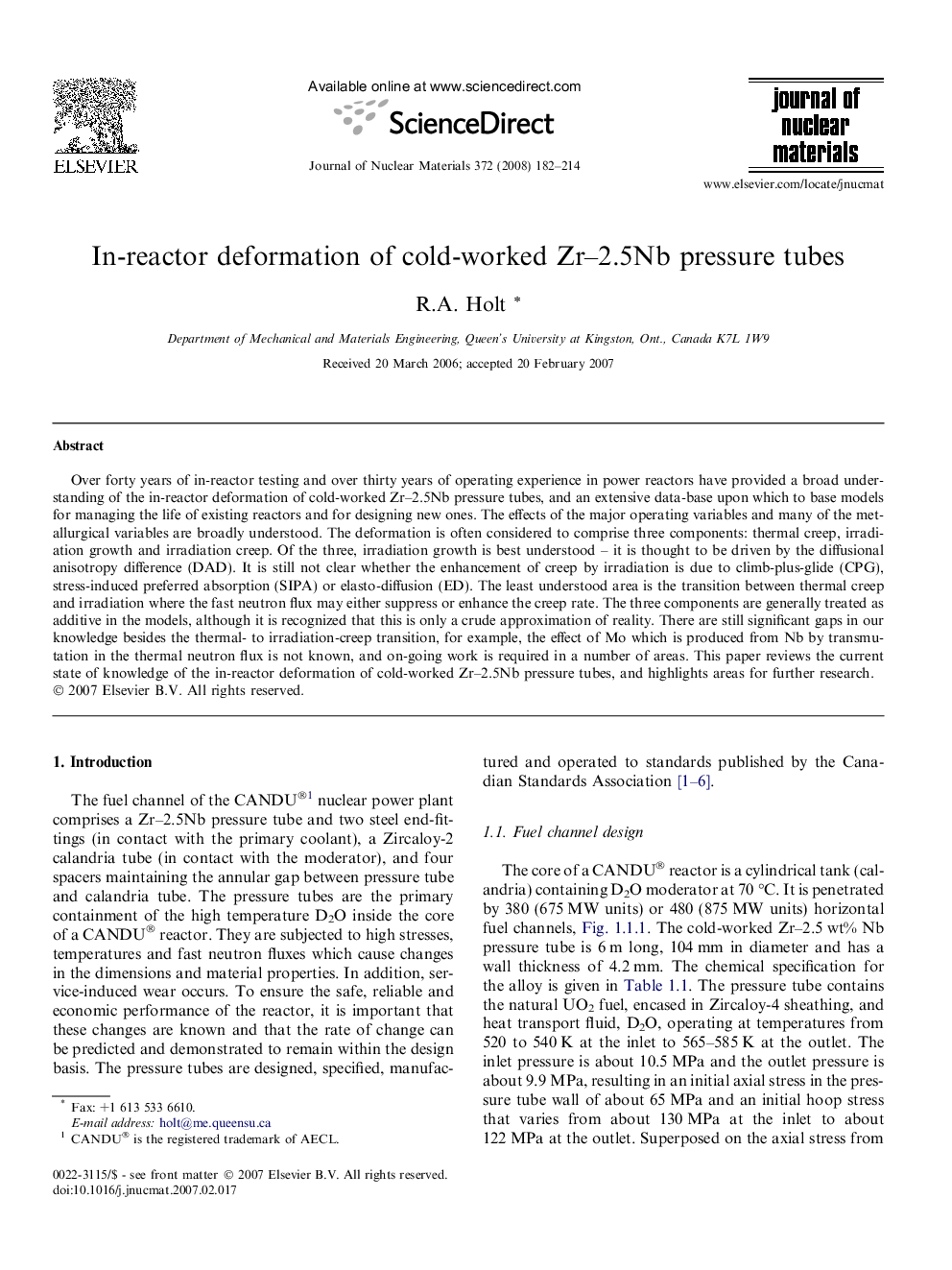| Article ID | Journal | Published Year | Pages | File Type |
|---|---|---|---|---|
| 1569003 | Journal of Nuclear Materials | 2008 | 33 Pages |
Over forty years of in-reactor testing and over thirty years of operating experience in power reactors have provided a broad understanding of the in-reactor deformation of cold-worked Zr–2.5Nb pressure tubes, and an extensive data-base upon which to base models for managing the life of existing reactors and for designing new ones. The effects of the major operating variables and many of the metallurgical variables are broadly understood. The deformation is often considered to comprise three components: thermal creep, irradiation growth and irradiation creep. Of the three, irradiation growth is best understood – it is thought to be driven by the diffusional anisotropy difference (DAD). It is still not clear whether the enhancement of creep by irradiation is due to climb-plus-glide (CPG), stress-induced preferred absorption (SIPA) or elasto-diffusion (ED). The least understood area is the transition between thermal creep and irradiation where the fast neutron flux may either suppress or enhance the creep rate. The three components are generally treated as additive in the models, although it is recognized that this is only a crude approximation of reality. There are still significant gaps in our knowledge besides the thermal- to irradiation-creep transition, for example, the effect of Mo which is produced from Nb by transmutation in the thermal neutron flux is not known, and on-going work is required in a number of areas. This paper reviews the current state of knowledge of the in-reactor deformation of cold-worked Zr–2.5Nb pressure tubes, and highlights areas for further research.
